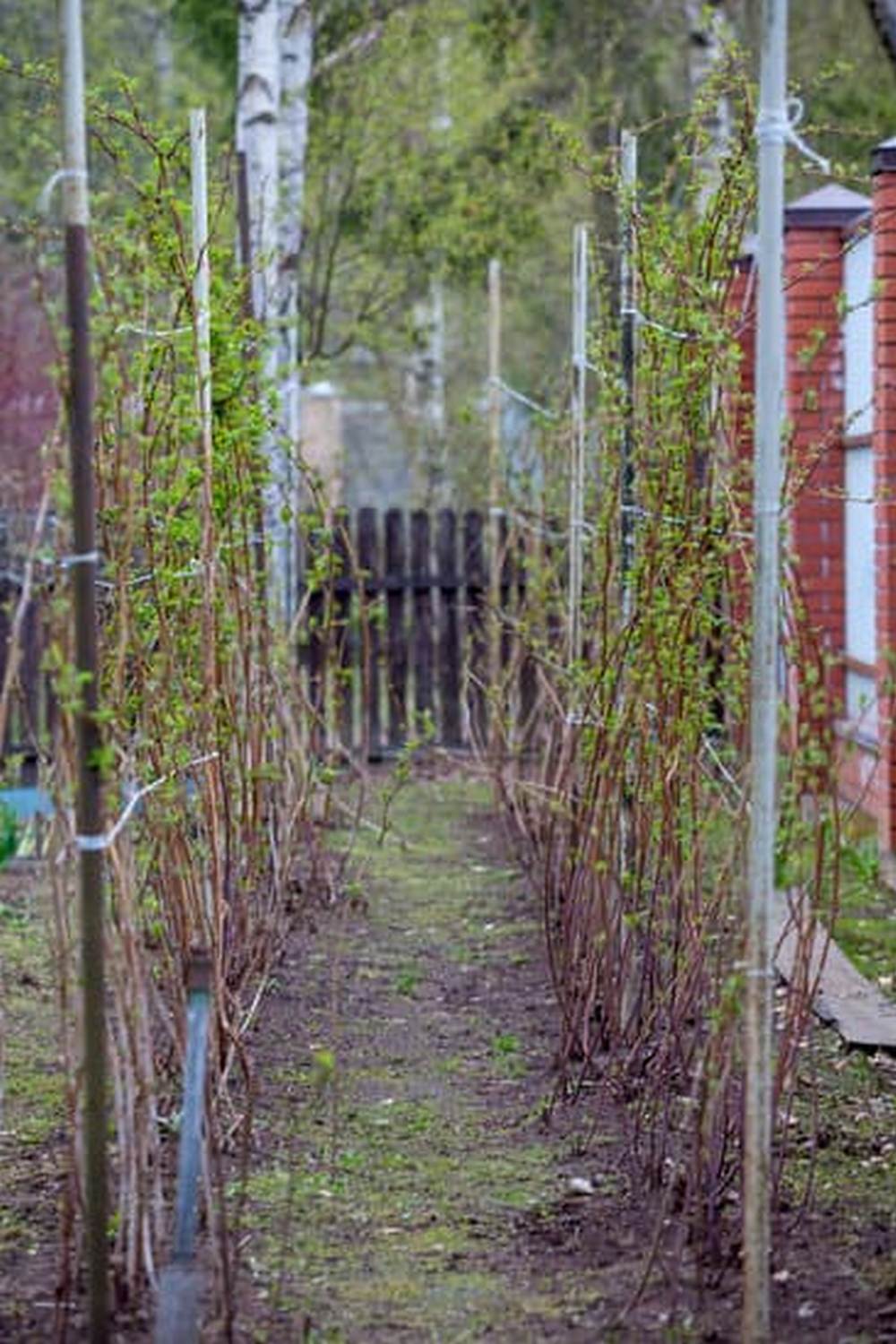Vegetable gardening is not only a rewarding hobby but also a sustainable way to ensure a fresh supply of nutritious produce. In this article, we will explore the 3 types of vegetable gardening that cater to various needs and preferences. Whether you have limited space or want to optimize soil quality, there is a method of vegetable gardening that suits your lifestyle.
Container gardening is perfect for those with small spaces, allowing individuals to grow vegetables in pots or other containers. Raised bed gardening offers the opportunity to maximize space and enhance soil quality for better yields. Vertical gardening takes advantage of vertical space, making it ideal for those with minimal ground area.
Each type of vegetable gardening has its own benefits and challenges, providing options for gardeners to choose from based on their resources and goals. By exploring these different methods, individuals can find the perfect fit for their unique needs and preferences when it comes to growing their own vegetables. Let’s delve into each type further to see which one resonates with you the most.
Container Gardening
One of the great advantages of container gardening is its versatility. Whether you live in an apartment with a balcony or a house with a small patio, you can easily set up containers to grow your favorite vegetables. Some popular options for container gardening include tomatoes, peppers, lettuce, herbs, and even root vegetables like carrots and radishes.
To get started with container gardening, here are some essential tips and guidelines to keep in mind:
- Choose the right containers: Select pots or containers that are appropriate for the size of the vegetable plant and make sure they have drainage holes to prevent waterlogging.
- Use quality soil mix: Invest in good-quality potting soil that provides proper drainage and nutrients for your plants to thrive.
- Provide adequate sunlight: Most vegetables require at least 6-8 hours of sunlight daily, so place your containers in a sunny spot on your balcony or patio.
By following these basic steps and choosing the right vegetables for your container garden, you can enjoy fresh produce all season long without requiring a large outdoor space. Container gardening is truly one of the most accessible and convenient ways to grow your own food, no matter where you live.
Raised Bed Gardening
Benefits of Raised Bed Gardening
One of the key advantages of raised bed gardening is the ability to customize the soil composition to suit the specific needs of different types of vegetables. By mixing the right proportions of soil components such as compost, peat moss, and vermiculite, gardeners can create a fertile and well-draining environment that promotes optimal plant growth. This is particularly useful for individuals dealing with poor soil quality or challenging growing conditions in their area.
Tips for Success
To achieve success with raised bed gardening, it’s important to consider factors such as sunlight exposure, watering frequency, and plant spacing. Position your raised beds in an area that receives at least 6-8 hours of sunlight per day to ensure healthy plant development. Additionally, be mindful of watering your plants regularly but avoid overwatering to prevent waterlogged soil.
Proper spacing between plants will also prevent overcrowding and allow each vegetable to thrive without competition for nutrients and sunlight. With these considerations in mind, raised bed gardening can be a rewarding experience that yields bountiful harvests throughout the growing season.
Vertical Gardening
When it comes to maximizing space and getting creative with vegetable gardening, vertical gardening is a fantastic option. This method involves growing vegetables upwards, whether it be on trellises, fences, or specially designed vertical garden structures. By going vertical, gardeners can make the most out of limited space, especially in urban areas or small backyard gardens. Not only does vertical gardening save space, but it also adds an aesthetic element to your garden by creating a visually appealing green wall.
Benefits of Vertical Gardening
One of the key benefits of vertical gardening is the efficient use of space. It allows you to grow more vegetables in a smaller area compared to traditional in-ground gardening. Vertical gardening also helps reduce the risk of pests and diseases that may come from soil contact.
By lifting the plants off the ground, there is improved air circulation which can help prevent common issues like mildew and fungal infections. Additionally, harvesting becomes easier since the plants are at eye level or within reach rather than having to bend down or kneel on the ground.
Best Vegetables for Vertical Gardening
Certain vegetables are well-suited for vertical growing due to their vining or climbing nature. Cucumbers, tomatoes, peas, beans, and squash are great options for vertical gardening as they naturally tend to grow upwards when given support. These types of vegetables thrive when they have something to climb on such as stakes, cages, or trellises.
Herbs like mint and thyme can also be grown vertically in hanging baskets or planters attached to a wall. When selecting vegetables for your vertical garden, consider their growth habits and choose varieties that will thrive in a vertical setting.
Incorporating vertical gardening into your vegetable garden not only saves space but also adds a beautiful element to your outdoor space. Whether you opt for trellises against a fence or invest in a specialized structure for climbing veggies, going vertical opens up endless possibilities for growing fresh produce even in limited spaces. So why not explore this innovative approach to vegetable gardening and enjoy bountiful harvests right at home?
Traditional in-Ground Gardening
When it comes to traditional in-ground gardening, there are several key factors to consider to ensure a successful harvest. One of the first steps is to choose the right location for your garden. Make sure the area receives adequate sunlight, typically at least 6-8 hours per day, and has good drainage to prevent waterlogging. Additionally, testing the soil pH and nutrient levels can help you determine if any amendments are necessary for optimal plant growth.
Once you have selected the perfect spot for your vegetable garden, it’s important to prepare the soil properly. Clear any weeds or debris from the area and till the soil to break up compacted areas. Adding organic matter such as compost or aged manure can improve soil structure and fertility, providing essential nutrients for your plants.
Now that your garden bed is ready, it’s time to choose which vegetables to plant. Consider factors such as your climate, growing season length, and available space when selecting crops. Some beginner-friendly options for traditional in-ground gardening include tomatoes, peppers, lettuce, carrots, and green beans. Remember to space plants according to their recommended distances to avoid overcrowding and competition for nutrients.
- Choose a sunny location with good drainage
- Test soil pH and nutrient levels
- Prepare soil by clearing debris and adding organic matter
- Select vegetables suited for your climate and space
- Properly space plants to avoid overcrowding
In addition to proper planting techniques, regular maintenance is crucial for a thriving vegetable garden. Watering consistently, especially during dry periods, is essential for healthy plant growth. Mulching around plants can help retain moisture in the soil while suppressing weeds. Monitoring for pests and diseases regularly can help prevent major infestations that could damage your crops.
- Water consistently during dry periods
- Mulch around plants to retain moisture and suppress weeds
- Monitor for pests and diseases regularly
- Consider using natural pest control methods like companion planting or insect-repelling herbs
- Maintain a regular harvesting schedule to promote continuous production
By following these basics and tips for success in traditional in-ground gardening, you can enjoy a bountiful harvest of fresh vegetables throughout the growing season. Remember that each garden is unique, so don’t hesitate to experiment with different varieties of plants or techniques to find what works best in your specific environment.
Hydroponic Gardening
There are several different types of hydroponic systems that can be used for vegetable gardening, including deep water culture, nutrient film technique, aeroponics, and more. Each system has its own advantages and challenges, so it’s important to research and choose the best one for your specific needs and space constraints.
Additionally, using a hydroponic system requires some basic knowledge of plant nutrition and maintenance, but once you understand the principles, it can be a rewarding and efficient way to grow vegetables.
One of the main benefits of hydroponic gardening is that it allows for precise control over the growing environment. This means you can easily adjust factors like nutrient levels, pH balance, and temperature to optimize plant growth and health.
Furthermore, because plants in hydroponic systems don’t need to expend energy searching for nutrients in soil, they can focus their energy on producing tasty and nutritious vegetables instead. Overall, hydroponic gardening offers an innovative and sustainable way to grow vegetables without the need for traditional soil-based methods.
Companion Planting
One popular example of companion planting is the “Three Sisters” method used by Native Americans, which involves growing corns, beans, and squash together in the same plot. Corn provides a structure for beans to climb on, beans fix nitrogen in the soil that benefits corn and squash, while squash acts as a living mulch by shading out weeds.
This symbiotic relationship between these three crops not only promotes healthy growth but also reduces the chances of pests taking over the garden.
When planning your companion planting scheme, it is essential to research which plants work well together and which ones should be kept apart. For instance, planting basil near tomatoes can improve the flavor and growth of tomatoes while deterring pests like aphids and hornworms. On the other hand, keeping potatoes away from tomatoes can prevent the spread of diseases like blight. By understanding these plant relationships, you can create a harmonious garden that thrives naturally.
| Companion Plants | Benefits |
|---|---|
| Tomatoes & Basil | Improved flavor and growth of tomatoes; deterrence of pests like aphids |
| Corns, Beans & Squash | Symbiotic relationship promoting healthy growth; weed suppression |
| Potatoes & Tomatoes | Prevention of disease spread like blight |
Tips for Choosing the Right Vegetables for Your Garden
When planning your vegetable garden, one of the most critical decisions you’ll have to make is selecting the right vegetables to grow. The choices you make will depend on various factors such as your location, climate, available space, and personal preferences. To make the process easier, consider these tips for choosing the right vegetables for your garden:
1. Know Your Climate: Different vegetables thrive in different climates. Some are more suited to cooler temperatures, while others prefer warmer weather. Before selecting your vegetables, research which ones are best suited for your specific climate zone. For example, leafy greens like lettuce and spinach do well in cooler climates, while tomatoes and peppers thrive in warmer regions.
2. Consider Your Space: If you have limited space for gardening, opt for compact or dwarf varieties of vegetables that can be grown in containers or small raised beds. Vegetables like cherry tomatoes, bush beans, and mini bell peppers are ideal for small spaces and require less room to grow.
Conclusion
In conclusion, vegetable gardening offers numerous benefits for individuals looking to enhance their health, save money, and reduce their environmental footprint. By exploring the 3 types of vegetable gardening – container gardening, raised bed gardening, vertical gardening, traditional in-ground gardening, hydroponic gardening – , individuals can find a method that suits their space constraints and preferences. Whether you have a small balcony or a spacious backyard, there is a vegetable gardening technique that can work for you.
Furthermore, starting a vegetable garden not only provides fresh produce but also promotes physical activity and mental well-being. The act of tending to plants can be therapeutic and rewarding. Additionally, growing your own vegetables allows you to have full control over what chemicals are used in the process, ensuring that you consume healthy and organic produce. Overall, cultivating a vegetable garden can lead to a sense of accomplishment and satisfaction.
Lastly, as we encourage readers to start their own vegetable garden, remember that every journey begins with a single step. Start small if you’re new to gardening and gradually expand your knowledge and expertise. Don’t be discouraged by initial setbacks or failures – learning from mistakes is an integral part of the process.
With dedication, patience, and the right resources, anyone can successfully grow their own vegetables at home. So grab your gloves and shovel – it’s time to embark on your vegetable gardening adventure.
Frequently Asked Questions
What Are the Different Types of Vegetables and Plants?
There are various types of vegetables and plants, including leafy greens like lettuce and spinach, root vegetables such as carrots and potatoes, cruciferous vegetables like broccoli and cauliflower, legumes like beans and peas, nightshade vegetables such as tomatoes and bell peppers, and bulbs like onions and garlic.
What Are 3 Vegetable Crops?
Three common vegetable crops include tomatoes, which are technically fruits but are used as vegetables in cooking, cucumbers that belong to the gourd family, and leafy greens like kale or Swiss chard. Each of these crops has its own cultivation requirements and uses in the kitchen.
What Are the Vegetable Groups for Planting?
Vegetable groups for planting can be divided into categories based on their growing habits or characteristics. For example, there are cool-season vegetables like lettuce and cabbage that thrive in colder temperatures, warm-season vegetables such as tomatoes and peppers that need heat to grow well, root vegetables like radishes and beets that have edible underground parts, vine crops such as squash and melons that spread out as they grow, and bush or compact plants like bush beans or dwarf tomatoes that don’t require much space to flourish.
Understanding these groupings can help gardeners plan their planting schedules effectively.

If you’re looking to get into vegetable gardening, or are just looking for some tips on how to make your current garden better, then you’ve come to the right place! My name is Ethel and I have been gardening for years. In this blog, I’m going to share with you some of my best tips on how to create a successful vegetable garden.





